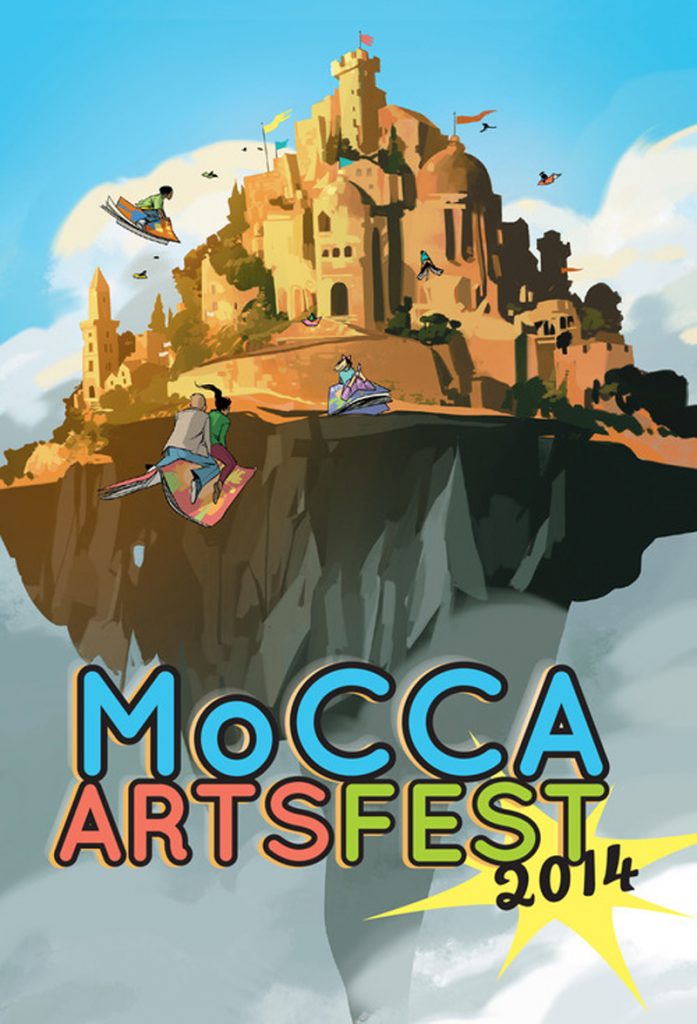The phrase “comic books” might at first bring to mind the image of brightly-colored capes and tights, and that wouldn’t be an unfair representation of what is considered mainstream in an industry dominated by Marvel and DC Comics, whose lines of superhero-centric books ate up over 60 percent of comic book sales in 2013, according to Diamond Comic Distributors Inc., the company responsible for handling subscriptions and shipping for most major comic book publishers.
But at the second annual MoCCAFest, a two-day comic and art convention hosted by The Museum of Comic and Cartoon Art and the Society of Illustrators in Manhattan the weekend of April 5 and 6, the aim, according to Convention Director Annelle Miller is to introduce more people to a more “alternative” form of comic book art.
“Our goal, besides showcasing artists, is to expose the public to this genre of illustration, comic and cartoon art, but the “indie” version of it,” Miller said. “Not the superheroes, but the young up-and-coming artists that are really working hard doing their own publishing and trying to get published.”
According to Miller, MoCCAFest has grown since last year, when the total attendance over both days reached approximately 4,000.
“This year, we had around 4,000 on just the first day,” Miller said.
These numbers hardly compare to larger conventions like the New York City Comic Con, which saw roughly 133,000 attendees last October, but some comic book creators wouldn’t have it any other way.
Art Spiegelman, whose graphic novel Maus, which depicts his father’s experiences as a Polish Jew and Holocaust survivor and won him the the first Pulitzer Prize for a graphic novel in 1992, is the kind of artist that fits right in at MoCCAFest.
“The thing I like about this [convention], is that it’s the corner of comics that’s in my ghetto,” Spiegelman said.

Spiegelman called it “baffling” that science fiction, fantasy and superhero comics dominate the industry when it is more likely, he said, that comics such as Maus, which dramatize history, or comics that depict more realistic stories would be more relatable.
“I remember wanting something like this to happen back when it was impossible,” Spiegelman said of the convention.
Spiegelman and other creators have hoped to bring a more literary type of comic book into the public eye for a long time.
“We wanted comics to be in libraries, bookstores, museums, and taught at universities, why not,” he said. “But, by god, be careful what you wish for, because now it’s all amazingly legitimate,” Spiegelman said of the expanding popularity of comics.
However, not every table at the convention was occupied by artists who had already earned their dues, like Spiegelman.
Carlos Rodriguez, a senior at the Manhattan High School of Art and Design, manned a table with some other students for their first time this year at MoCCAFest.
MoCCAFest, Rodriguez said, “is a good chance for students to show off original work and get discovered,”
But, Rodriguez said, the competition to be noticed for your work is steep and it’s hard to imagine his classmates “rolling in money” when he had made only a small number of sales.
Though the majority of works on display at MoCCAFest shared little content

similarities with your monthly Batman comic, it wasn’t impossible to find some hold-outs of the popular superhero genre amongst the self-published or small-press comic offerings.
For Spenser Anderson, 26, last year’s MoCCAFest was his inspiration to finally publish a comic.
Anderson, who moved to New York last year from Beaufort, S.C., debuted Fairy Dust, a comedic superhero title which he describes as a cross between popular Japanese cartoon, Sailor Moon and the Power Rangers, at this year’s convention.
“I came to New York not too long ago, and saw that there’s a comic book convention that’s
not New York City Comic Con,” Anderson said. “So I decided to sit down, get all of my ideas together, get a book out and actually debut it here.”
After a “great” experience at MoCCAFest, Anderson said he plans to return next year, hopefully with a few more issues published.
And next year’s MoCCAFest will be even bigger if the trend continues.
“I think there are several things contributing to it,” Miller said. “I think more people are starting to have more awareness of MoCCA and the Society of Illustrators. I think the programming we did this year and publicizing the programming and guests of honor … definitely brought people in.”
She jokingly added that some of the appeal may have nothing to do with the art.
“I think having a Charlie Brown Macy’s Thanksgiving balloon hovering in the ceiling has definitely brought a lot of people to come see that,” she said.

